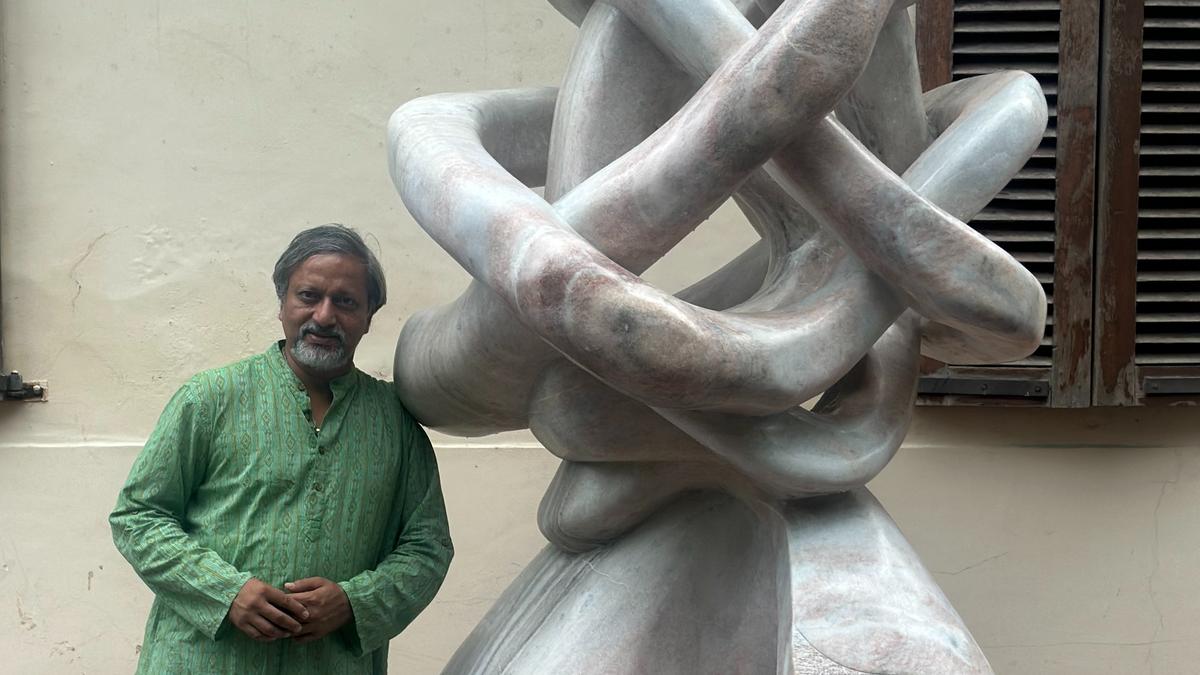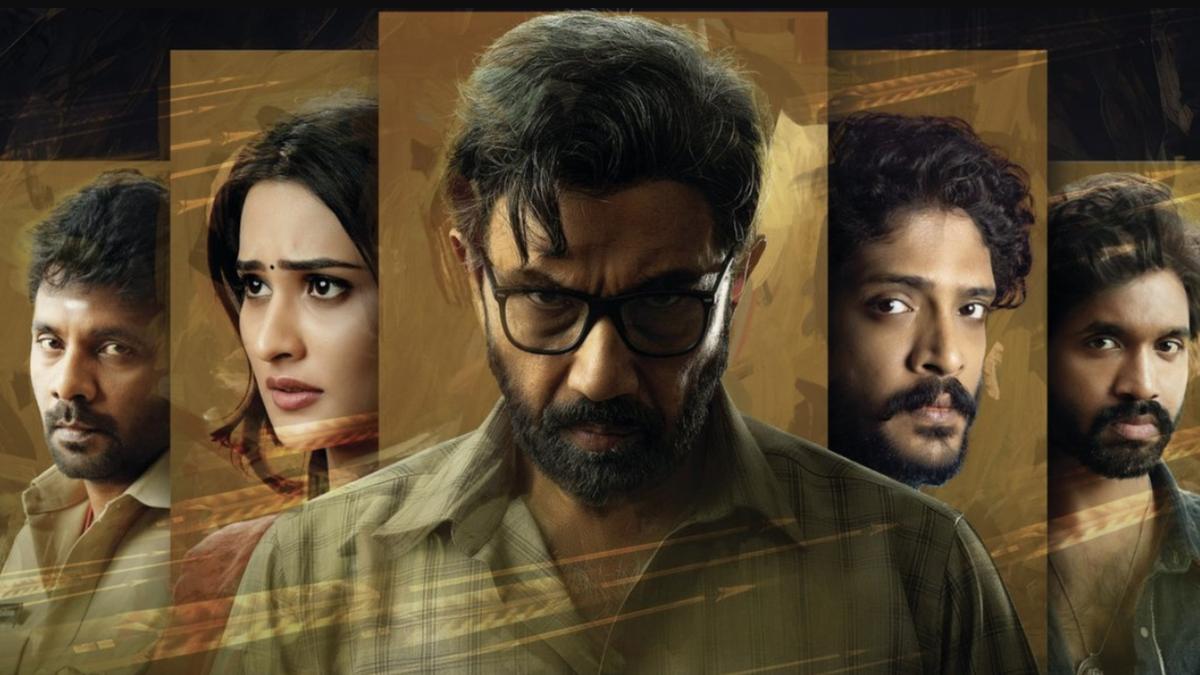For centuries, Japanese folklore has seethed with shapeshifters, grotesques, tricksters, vengeful ghosts, and objects that come alive when left alone too long. But the word yōkai — a neat compound of two kanji meaning “suspicious” and “doubtful” — has resisted the simple taxonomy of goblins and ghouls. They are not quite demons, not quite gods, but emissaries of animism, or the belief that anything and everything might house a restless soul. Priests developed rituals to pacify these forces, separating the benevolent nigi-mitama from the violent ara-mitama. When the latter went untended, they curdled into yokai, requiring rites of chinkon to soothe them back into balance.

Sometimes they’re mischievous foxes or long-necked women, sometimes a sandal or a teapot that suddenly develops eyes and limbs. Edo-period artists such as Toriyama Sekien catalogued these yōkai into detailed bestiaries, while scholars like Kunio Yanagita famously collected tales of such entities in Tōno Monogatari, but the truth is that the line between invention and tradition has always been blurry.
By the 20th century, modernisation eroded the daily intimacies that once made yōkai seem plausible. Many of the old spirits relied on a pre-industrial familiarity with land and ritual. Who, after all, still feared a haunted inkstone, or the bucket that drew water from a well? Yet new technologies were quick to refill the vacuum. Kamishibai storytellers, penny manga rental shops, and television carried yōkai into mass consciousness. Shigeru Mizuki, creator of GeGeGe no Kitaro, codified an entire new bestiary in print. Others, like Arifumi Sato, conjured fresh monsters — like the skeletal gashadokuro or the vampiric jubokko — and sold them to children in encyclopedias. Purists grumbled that such inventions cheapened tradition, forgetting that Sekien himself was guilty of the same game.

The Tsuchinoko or Mongolian Death Worm from ‘Dandadan’ Season 2 | Photo Credit: Crunchyroll
Rather than ossifying, Japanese occult lore has proven remarkably elastic. Old ghosts jostle beside new urban legends, with schoolgirls whispering about Hanako in the bathroom, or Kuchisake-onna, the slit-mouthed woman asking if she’s beautiful. Today, for most young Japanese, yōkai live in phone screens and horror manga panels.
It is precisely in this atmosphere of constant mythological remix that Yukinobu Tatsu’s Dandadan felt inevitable. The manga, and its riotous anime adaptation, operate as a series of carnivalesque séances. Ghost stories, UFO conspiracies, exorcism rites, and juvenile romance all collide at maximum decibel, producing a hyper-stylised punk folklore for the 21st century. Where earlier storytellers sought to render spirits legible, Dandadan thrives on exaggeration, spectacle, and the absurd impossibility of it all. It is a story about how superstition survives in the digital age by remixing itself until it feels contemporary again.
Among its rogue’s gallery of spirits, there’s Turbo Granny, a hag-turned-drag racer who skewers the old Japanese famine-era practice of abandoning the elderly in the mountains. She’s crass, vindictive, and impossibly quick, but also oddly protective — doling out tenderness to the ghosts of abused girls and castrating any man foolish enough to trespass on her turf.

The Music Room Portraits from ‘Dandadan’ Season 2 | Photo Credit: Crunchyroll

Meanwhile, the Acrobatic Silky is a red-draped mother in a plate-like bonnet, leaping rooftops in search of her lost child. It’s an Edo-period legend re-skinned for the parkour generation. Then there’s the vertical pupils and serpentine dances of the Evil Eye, reducing mortals to suicidal impulses. The yōkai doubles as a riff on the Internet-era specter of the Kunekune — a thin, writhing figure spotted from afar that supposedly drives onlookers insane if they approach.
One of the oldest schoolyard rumours in Japan is that the portraits in the music room — of Beethoven, Mozart, Chopin, etc. — watch you after dark. Dandadan takes the joke literally, turning them into tulpa assassins who hurl weaponised symphonies. Also soon to make an appearance in the anime is Reiko Kashima, Dandadan’s version of the Kuchisake-onna, re-imagined as a muscular, crown-wearing rival with a complicated relationship with vanity.
The series digs deeper into cryptid territory as well. The rural snake-thing Tsuchinoko gets a Dune-inspired makeover as the Mongolian Death Worm, worshipped as Orochi-sama and fed with human sacrifice. The Loch Ness Monster or “Nessie” drifts in too, reborn in the radioactive image of Shin Godzilla. And when the real-life pulp journal Super Mystery Magazine MU pops up, the show knows it’s part of the same cottage industry of curated weirdness.

One recent episode from the anime features the HAYASii — parodies of traditional hayashi festival musicians — recast as leather-clad headbangers channeling a Slipknot-like bombast. Their exorcism is powered by decibels alone, with feedback, double-kick drums, and shrieking guitars that rattle yokai into submission. The English dub doubles down on the gag with tracks laid down by members of DragonForce and Megadeth, turning the ancient chinkon rite meant to soothe restless souls into a full-blown death-metal séance that doubled, accidentally, as an homage to the late Ozzy Osbourne.
The anime’s viral opening theme from its first season, Otonoke by Creepy Nuts, also captured this mood board of contemporary occultism perfectly. It’s crammed with Easter eggs and references to modern horror stories like Sada-chan and Kaya-chan, Internet legends like “Kinkisaki”, and numerological taboos around 4:44 AM. Even M. Night Shyamalan manages to sneak in.
The title itself plays with the suffix –dan, meaning “story,” recalling kaidan (ghost stories) or kidan (strange tales); and its repetition — “Dan-da-dan” — has the rhythm of a chant, a drumbeat, or the stutter of a retro anime sound effect. Later revelations in the manga even tie its cosmology to Buddhist texts on the Womb Realm and enlightenment. In other words, the show shifts seamlessly from pop-cultural parody to esoteric doctrine.
This willingness to collage is, in its way, faithful to how yōkai have always worked. Most of the creatures we think of as “traditional” today were popularised by artists, novelists, and kabuki playwrights. Folklore was always protean. It was imagined to be consumed, laughed at, feared, and recycled. The sense that it functioned as a closed canon is a modern illusion. Dandadan simply continues the process, updating the imagery for a generation that spends more time on YouTube than in Shinto shrines. Where yokai were once invoked to explain why crops failed or children fell sick, they now serve as vessels for adolescent anxieties about friendship, sexuality, and belonging. They are alive because they are believed in, and because they are still fun to tell stories about. Which, for folklore, is the only kind of immortality that matters.
Dandadan is currently streaming on Crunchyroll

 2 hours ago
1
2 hours ago
1






















 English (US) ·
English (US) ·